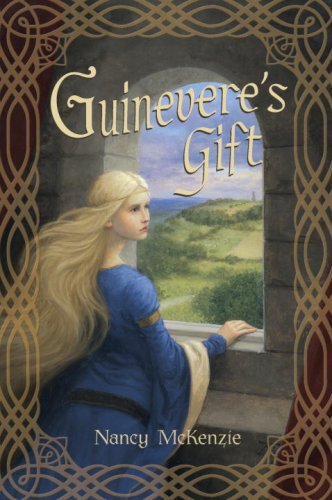Guinevere’s Gift
In modern Arthurian fiction, Arthur’s queen is usually portrayed as either an imperious and wilful manipulator, or a (largely) innocent victim of the plots of others. Nancy McKenzie adopts the latter approach in The Child Queen and The High Queen (1994, 1995; reissued together in 2002 as Queen of Camelot), and again in Guinevere’s Gift, which returns to Guinevere’s adolescent years as a ward of the king and queen of Gwynedd in this novel for younger readers.
At thirteen, the future high queen is a Cinderella figure: an insecure orphan, she struggles to cope with the jealousy of her aunt Alyse and the bullying of her cousin Elaine, while her indulgent uncle Pellinore is absent, fighting in Arthur’s wars. She loves riding, but her aunt considers this escape from domestic pressure both dangerous and unladylike, evidence of a headstrong nature. Yet it is this riding ability, combined with courage and intelligence, which enable her to prevent a war against the hillmen, who have been unjustly blamed for stealing cattle, and to foil a treasonous plot to seize Pellinore’s castle and kingdom.
McKenzie constructs a credible Dark Age world, and she generates considerable suspense as Guinevere fights desperately to protect not only good friends like her nurse Ailsa and Llyr the hillman, but her unkind aunt and wilful cousin too, from the dangers that threaten. If the characters divide rather too readily into good or bad, they are given credible motivations, and it is, arguably, a perspective that most adolescents share. They will also recognize the sense of vulnerability that people experience when power and ambition are wielded ruthlessly. This is a thought-provoking novel.










